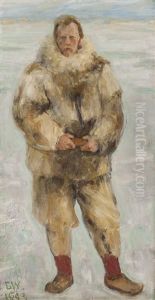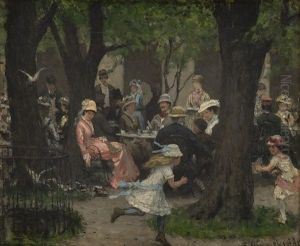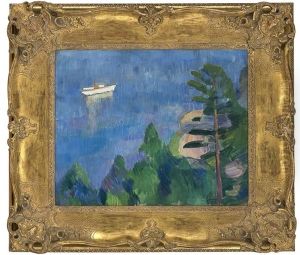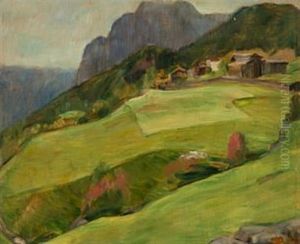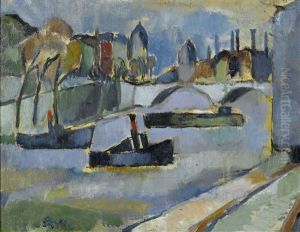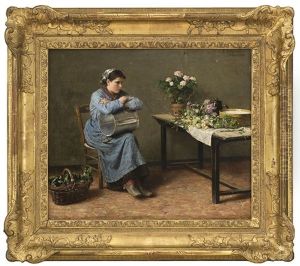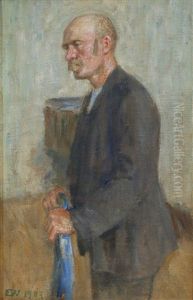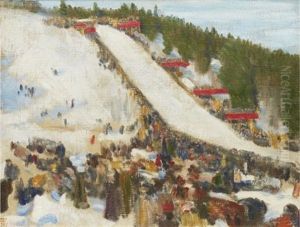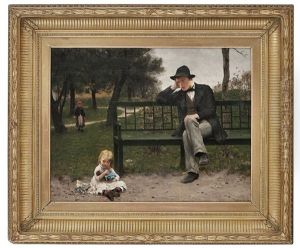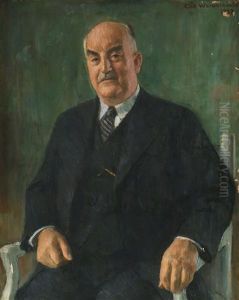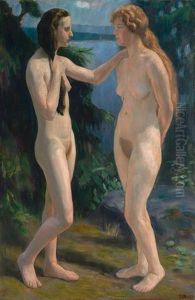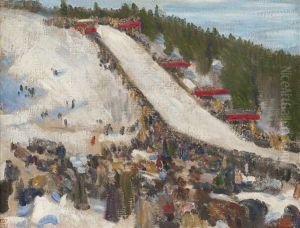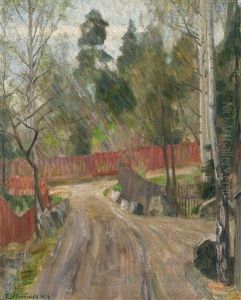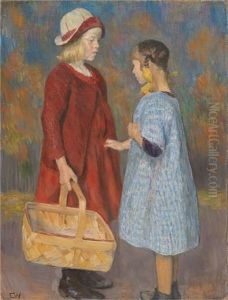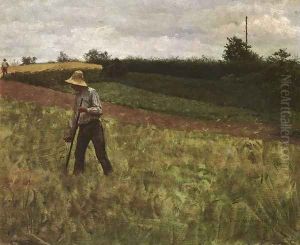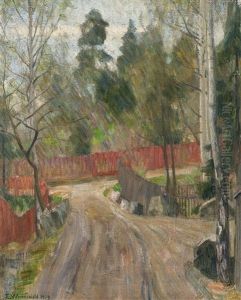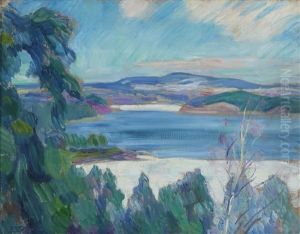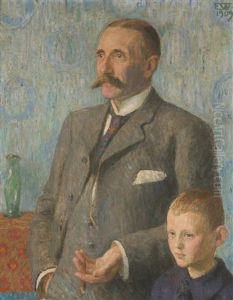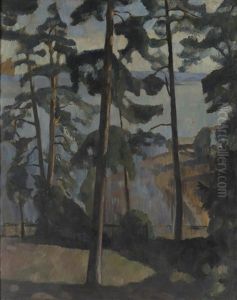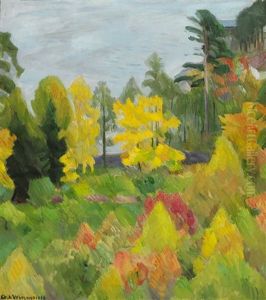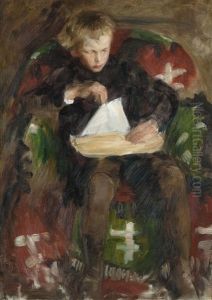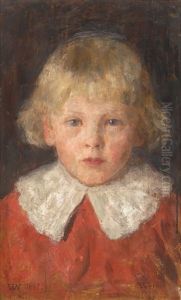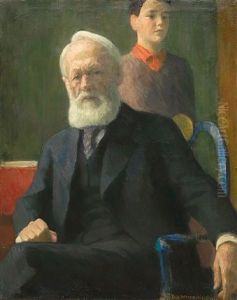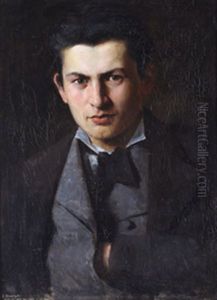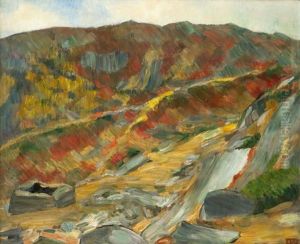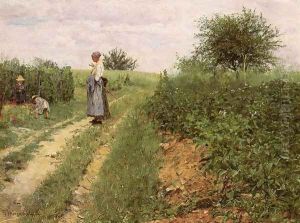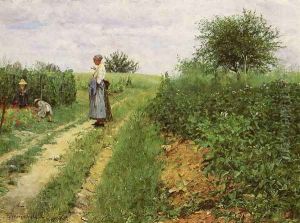Erik Theodor Werenskiold Paintings
Erik Theodor Werenskiold was a notable Norwegian painter and illustrator, born on February 11, 1855, in Eidskog, Norway. He grew up in a rural environment, which would later greatly influence his artistic work. Werenskiold is particularly known for his realistic portrayals of Norwegian peasants and landscapes, as well as for his contributions to the illustration of literary works, including Norwegian folk tales and the epic historical narrative, 'Heimskringla'.
In the 1870s, Werenskiold studied at the Drawing School in Oslo (then called Christiania) and later at the Academy of Art in Munich, which was a significant center for art students from the Nordic countries at the time. His time in Munich allowed him to develop his technical skills, and he was influenced by the naturalistic tendencies of the Munich school. However, it was his return to Norway and his work outdoors, capturing the Norwegian countryside, that truly defined his artistic style.
Werenskiold became a central figure in the cultural life of Norway. His collaboration with fellow artist Theodor Kittelsen on the illustration of Norwegian fairy tales by Asbjørnsen and Moe is among his most famous work. These illustrations became deeply ingrained in Norwegian cultural heritage, shaping the visual conception of Norwegian folklore for generations.
Apart from folklore, Werenskiold also engaged with historical themes and was commissioned to illustrate the 'Heimskringla', a collection of sagas about the Norwegian kings, written by the historian Snorri Sturluson. His illustrations for this epic work are characterized by a strong narrative element and a keen attention to historical detail.
Throughout his career, Werenskiold also painted many portraits and landscapes, exhibiting his work in various venues, including the Paris Salon, where he received an honorable mention in 1881. His landscapes often depict the serene and rustic life of the Norwegian countryside, showing a sensitivity to the changing seasons and the daily lives of the people.
Werenskiold's influence extended beyond his own work as he became an important voice advocating for the development of a distinct Norwegian national identity in art. He was involved in debates about the style and direction of Norwegian art and was instrumental in establishing the National Gallery of Norway.
Erik Theodor Werenskiold passed away on November 23, 1938, in Oslo. His legacy is preserved not only in the National Gallery and other museums but also in the cultural fabric of Norway, where his illustrations continue to be associated with the nation's folklore and history.
